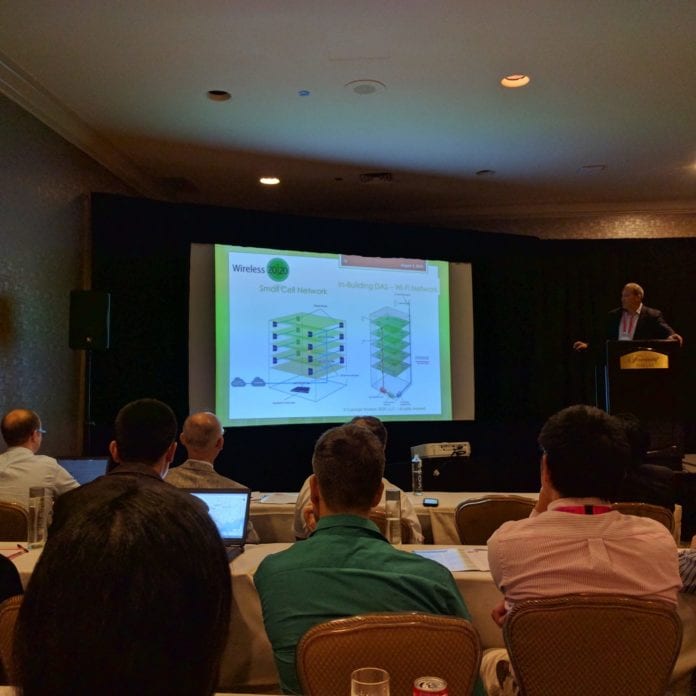DALLAS – Randall Schwartz, founder and consultant at broadband wireless consulting firm Wireless 20/20, gave a number of recommendations for breaking the dam holding back in-building deployment in a workshop titled “In-building wireless – how to create a win-win-win business model” at the recent SCWS 2016 event.

Even though 80% of mobile traffic is used indoors, 98% of buildings in the United States do not have in-building wireless solutions, according to Schwartz, who emphasized the importance of finding the value of venues and determining the right business model for each unique circumstance.
According to Schwartz, key trends for in-building deployment for mobile network operators include:
- Global mobile traffic is growing 12- to 15-fold between 2012 and 2018, with the biggest challenge is to keep up infrastructure investment. The number of distributed antenna system nodes and small cells is expected to triple in the next five years.
- Capital expense budgets continue to go through roof for operators. Can MNOs keep up capex investment to keep up with exponential mobile data growth?
- MNOs want to control their networks, but economics will drive MNOs towards shared infrastructure.
Schwartz proposed a shared infrastructure model to help lower capex, increase cost savings and improve speed to deployment where a neutral host exists to take on the job of operating the installment. Historically, passive DAS were deployed by carriers, but are now being overwhelmed by capacity demand. A neutral host format can create new operator models where there could potentially exist a new operator for every building.
Commercial real estate connectivity is seen as becoming mission critical, and support for multicarrier wireless is a necessity. This creates problems for in-building deployments. Schwarz says MNOs need to see value in going to a neutral host model as there currently exists a standoff where everyone is looking at one another, but no one is doing anything about the issues. One big question is who is responsible for fronting the funds required for backhaul. Some think business owners should pay because they receive added value to their property. On the other hand, building owners think operators should pay because in-building represents an extension of MNO networks and therefore are servicing their own customers.
The importance of in-building wireless is evident, according to Schwartz, who gives three requirements for deployment:
- Wireless must be considered as a base utility for all new developments.
- Must have five-bar coverage throughout the building for all users.
- Must provide adequate capacity.
Schawartz also claims mobile operators must densify their networks (more capacity) to meet ever increasing traffic demand while making in-building networks a necessary part of network enhancement.

Schwartz believes sharing RAN costs and using a neutral host to put in the system instead of each carrier paying for its own network, reduces cost and makes it easier on operators. Potential benefits to MNOs include saving money on capex and operating expense; faster deployments; and access to new high density venues.
While the neutral host will be tasked to:
- Own and operate neutral host, multicarrier and multitech distributed networks.
- Support multiple MNOs.
- Provide Wi-Fi, 3G, 4G and LTE services.
- Offer a highly scalable network design, evolve with time.
- Suit the network densification need of the MNOs.

